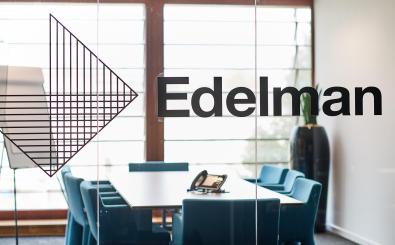I was lucky enough to attend MET AMS - Europe's leading metaverse festival that included keynotes, panels, talks and workshops as well as immersive experiences and installations from 100+ thought leaders, artists and brands shaping this space.
To say that my time at MET AMS was eye-opening would be an understatement. Surrounded by a community of metaverse enthusiasts, we explored different facets of the metaverse, unravelling the potential impact it can have in completely reshaping entire industries.
One of the most exciting moments at MET AMS was seeing the full spectrum of work being done to create the next generation of the internet. From forging the path to true realistic representation that bridges the uncanny valley in avatars, to exploring different ways to enable interaction that engage all our senses in reality pods, this is just a fraction of the work to be done in order to create the fully inclusive, persistent, interconnected, real-time world(s) that the metaverse promises.
Little would I have known that over the span of the festival I would find myself creating a hyper-realistic virtual avatar, roaming Westerpark in search of Kryptomon eggs, or perusing an NFT gallery.
Across all panels, there was a shared sense of excitement, uncertainty, and optimism as we’re just scratching the surface of what the metaverse is and how it will revolutionize the world as we know it today for the better.
Four key themes stood out for me:
Building in Inclusivity
Current challenges that we face is a lack of representation and interoperability in how you can portray yourself in the metaverse – avatar creation is templated and confined to usage on a single platform.
Inclusivity needs to go even further than how we enable people to create a virtual avatar that looks the way that they do (or want to look). We need to take into account nuances such as contextual portrayal, where the desired-self you want to project changes depending on where/when you are – the same way we portray ourselves differently at work, at a club, or our favorite game world.
But inclusivity isn’t just about portrayal – it’s also about enabling equal access through tech. With large variations and gaps in access to high-speed internet and set-ups capable of rendering 3D graphics, can we call the metaverse inclusive if a huge part of the population is walled off?
This challenge is compounded even further when we consider all the different ways audiences will be able to interact in the metaverse. How can we design a shared world with equal experiences when there’s so many ways to plug in - from mobile, desktop, VR headsets, motion controllers, to fully fledged immersion pods?
Trust the Maker/Breaker of Success
In this latest evolution of community-owned virtual worlds with decentralized control and blockchain-fueled transparency, being able to build and maintain trust is more important than ever before.
However, we can’t simply rely on technology to create trust, this needs to be built on all sides. Brands need to place trust in their communities, relinquishing control and giving the reins to their audience base to shape and lead conversations on their platform. Simultaneously, we have a collective responsibility to prevent unethical practices that can tarnish the reputation and trust of the industry as a whole. (For example, selling your NFT art to yourself to hike up prices is a big nono.)
More than anything, the foundation for trust in this new digital age will be built around a clearly defined purpose and values that audiences share. This will delineate between brands purely looking to join in on the hype and asking for trust with the brands who will succeed long-term by earning it.
Earned is King
With all the hype and noise around the metaverse, brands need to ask themselves: just because we CAN be in the metaverse, does this mean that we SHOULD?
Metaverse isn’t the what, it’s a how. We mustn’t forget that in all the hype. One of my favorite takeaways was from the artist Dadara - don’t get distracted by the technology, in the end it’s still about people. (Disclaimer he did give me free money).
How do your experiences fit into how your audiences want to engage? Creating a virtual experience that allows audiences to buy a low-consideration purchase like toothbrushes or toilet paper probably isn’t it. Whether you’re providing audiences with entertainment, utility, or connection through your metaverse activities, these should enhance your current customer journey rather than detract from it.
To find long-term success, brands can’t just follow and jump on the hype train – they need to create a space that’s rooted in what they stand for, their mission, and the values they embody. More than anything, brands need to understand that the days of having total control and being able to dictate audience conversations are over.
It’s no longer a one-way street, but an intersection of audience-directed conversations that brands need to add value to, or risk being excluded.
In the metaverse, being able to earn a space in the conversation is more important than ever. Instead of push communication, we need to add value to the lives of our audiences - enhancing the experiences they seek rather than interrupting them.
Within this new landscape, it simultaneously requires us/creates opportunities for us to tell richer and more inclusive stories that earn the attention of our audiences and fit into how they want to connect and communicate.
Enabling Community Action
Last but potentially most important are the communities we are trying to bring together. The principles of building a community in the metaverse is reflective of the real world – it’s predicated on shared value, a feeling of belonging, identity, purpose, or more.
How we think of our communities needs to be reframed – they aren’t just an audience that you would like to push product and sell to. They’re your advocates, your product testers, an extension of your team, or even potential future talent of your organization.
The metaverse creates a unique opportunity for brands to enable true action among their communities, providing their audiences with a platform to take the stage and lead the shaping of the world(s) they want to be part of. For brands that want to stay relevant, take the time to ensure that you’re delivering value for your community, creating a sense of belonging, recognizing, and rewarding loyal members, and demonstrating that all opinions are valued. It’s the communities that are built on shared value creation that will stand the test of time.
One aspect of metaverse communities that I find critical is how we (platforms, brands, users) come together to make this a safe space for participants. With our digital presence in communities increasingly being a representation of our personal self, how do we make sure that this doesn’t create more opportunities for people to be ostracized and bullied?
Already in games like Fortnite, younger players are bullied into spending IRL money to buy in-game skins because using the default skin is perceived as shameful. This opens up more challenges such as how can we create accountability for the actions in the metaverse or how do social constructs change in the metaverse – challenges that need to be addressed in lockstep rather than by any single party.
While many questions were answered throughout MET AMS, being on the edge of a new frontier means we must search for the answers ourselves to the million more questions that arise. Answers that can only be found by rolling up our sleeves and diving right in.
Want to know how to carve out your space in the metaverse? Sign up to receive our Edelman Metaverse POV at info.amsterdam@edelman.com.

